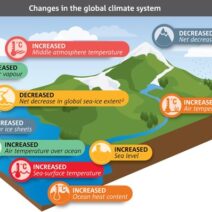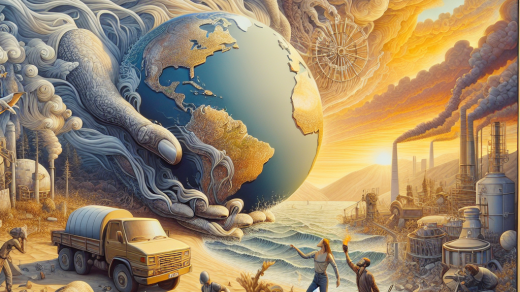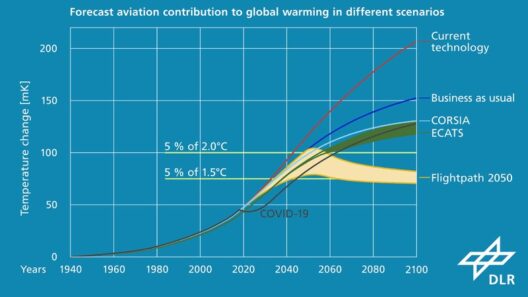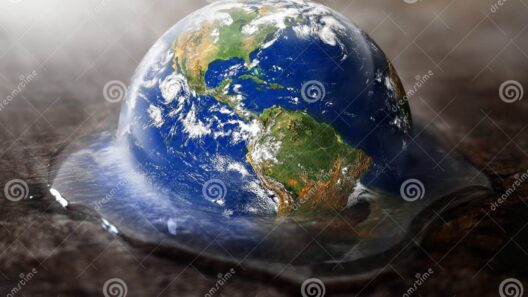Red algae, or rhodophytes, represent a group of diverse marine plants that thrive in tropical and temperate seas globally. These ancient organisms, possessing a remarkable ability to photosynthesize, have coexisted with marine ecosystems for over a billion years. However, as climate change accelerates, the delicate balance of these marine environments is increasingly jeopardized, provoking an urgent discourse on the impact of global warming on red algae and their ecological significance.
To grasp the implications of climate change on red algae, it is imperative to first delve into their biology and ecological roles. Characterized by their distinctive reddish hue, attributed to the pigment phycoerythrin, red algae exhibit a variety of forms—from unicellular species to complex multicellular structures resembling seaweeds. An astounding feature of red algae is their ability to thrive at great depths—up to 250 meters in some cases—where light penetration is scarce. This depth resilience allows them to occupy niches that many other photosynthetic organisms cannot, thereby contributing significantly to carbon fixation in marine ecosystems.
Ecologically, red algae serve as foundational species, establishing habitats and providing food for a plethora of marine organisms. Coral reefs, often dubbed the “rainforests of the sea,” rely on the symbiotic relationships formed between red algae and corals. The zooxanthellae, a type of dinoflagellate that often lives within coral tissues, glean nourishment from the red algae while simultaneously providing corals with the energy necessary for growth. This mutualism is critically dampened by rising ocean temperatures and increasing acidification, driven predominantly by anthropogenic activities.
One of the most pressing concerns regarding the fate of red algae is their vulnerability to temperature fluctuations. As the oceans warm, red algae face thermal stress, which can lead to reduced photosynthetic efficiency and phenological shifts. The consequences of these changes reverberate through the marine food web. For instance, when red algae experience stress, they may release harmful metabolites into the water. These can inhibit the growth and development of coral reefs and other marine organisms, resulting in disrupted ecosystems.
Moreover, the phenomenon of coral bleaching—largely instigated by higher sea temperatures—exemplifies the precarious situation faced by red algae. Bleaching occurs when corals expel their symbiotic algae, leaving them vulnerable and devoid of essential nutrients. If red algae populations decline, the ramifications for coral reefs, marine biodiversity, and fisheries could be catastrophic. This cascade effect not only threatens ecological integrity but also jeopardizes livelihoods dependent on these ecosystems, highlighting the inextricable link between environmental health and human welfare.
Rising sea levels and increased frequency of marine heatwaves further exacerbate the conflicts surrounding red algae. These stressors contribute to the proliferation of harmful algal blooms (HABs), often characterized by excessive growth of specific algae, including certain red algal species. The consequences of these blooms can be dire—ranging from oxygen depletion, aquatic dead zones, and the production of toxins that adversely affect marine life and human health. The increasing incidence of HABs serves as a clarion call for global policymakers to address the root causes of climate change and habitat degradation.
Interestingly, red algae also exemplify resilience and adaptability. Some species exhibit remarkable capacity for acclimatization to changing conditions, offering glimmers of hope amid the crisis. For instance, certain red algae can adjust their photosynthetic mechanisms to optimize light absorption in varying depths, while others exhibit enhanced growth rates under elevated CO2 conditions. Research into these adaptive traits could unlock potential strategies for future conservation efforts and sustainable aquaculture practices, transforming our approach to marine resource management.
Additionally, the significance of red algae extends beyond their role in ecosystems. They are a valuable resource for various industries, including food, pharmaceuticals, and cosmetics. Rich in nutrients, red algae are harvested for their high protein content and beneficial compounds, such as carrageenan and agar, which are utilized as gelling agents in various products. However, unsustainable harvesting practices coupled with environmental stressors pose existential threats to these species. The balance between utilization and conservation must be meticulously navigated to ensure the survival of both red algae and the industries reliant on them.
In light of these multifaceted issues, the need for a paradigm shift in our relationship with marine ecosystems is paramount. As the world grapples with the realities of climate change, fostering a deeper understanding and appreciation for the significance of red algae could galvanize collective action. Empowering communities through education about the ecological roles of red algae may lead to more robust conservation efforts, influencing public policy decisions aimed at mitigating climate change’s impact on marine environments.
The narrative surrounding red algae is not merely a tale of struggle but a call to action—one that emphasizes the need for conservation, research, and sustainable practices. By acknowledging the intricate interdependencies within marine ecosystems, we can cultivate a newfound respect for organisms that, while often overlooked, play crucial roles in maintaining ocean health. The myriad adaptations and contributions of red algae serve as a testament to the resilience of nature even in the face of profound challenges.
Ultimately, the future of red algae—and, by extension, the overall health of our oceans—depends on our commitment to understanding, preserving, and innovating in response to climate change. As stewards of the planet, it is our responsibility to advocate for policies and lifestyles that uplift and protect the delicate balance of marine ecosystems. Engaging in thoughtful dialogue about the implications of our actions on organisms as seemingly small as red algae may yield crucial insights that lead to a more sustainable future.







